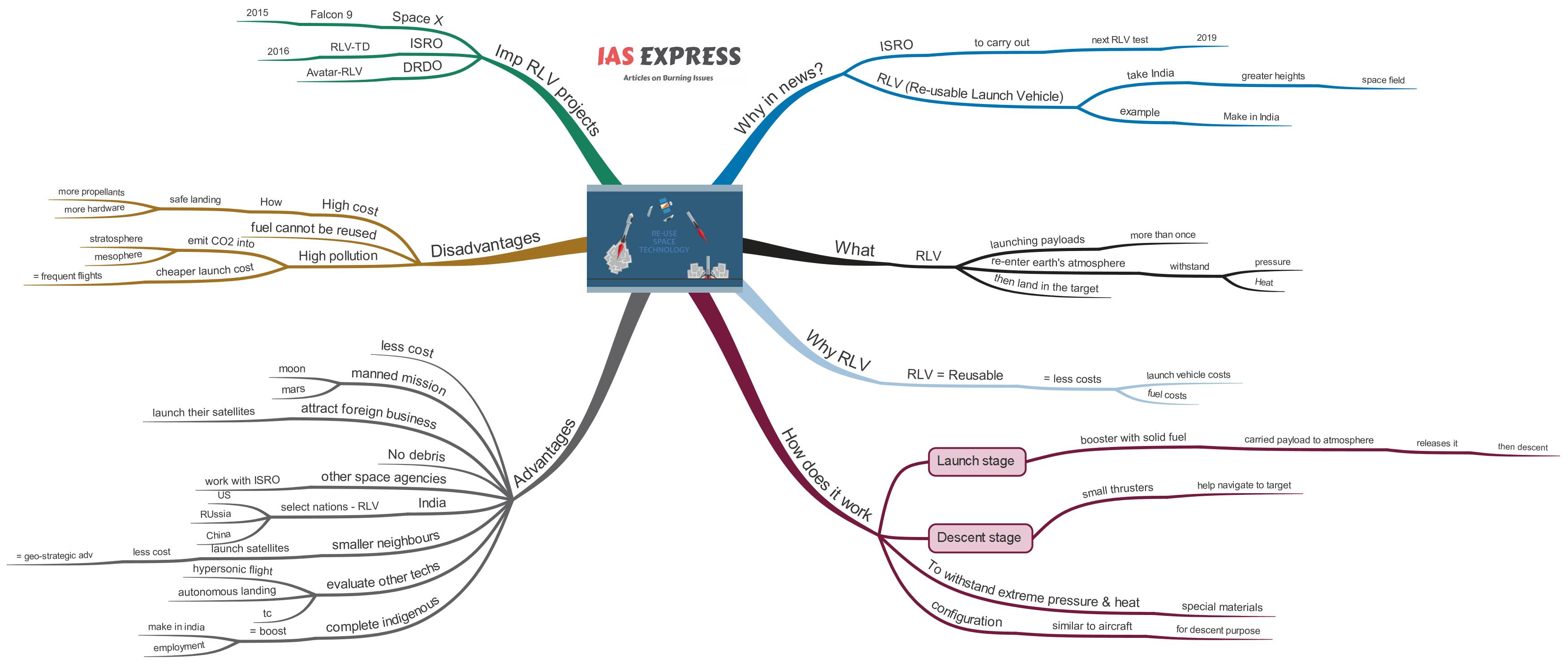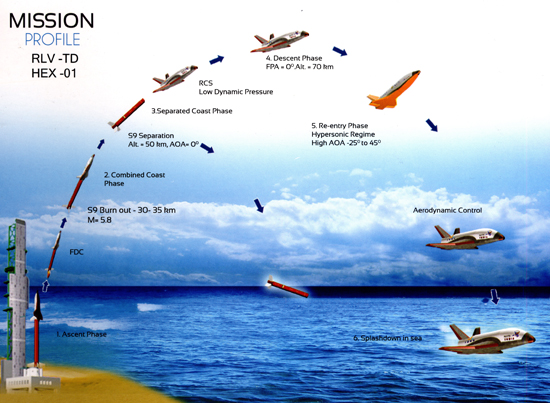Reusable Launch Vehicle (RLV) – The Road to Cheap Space Travel

From Current Affairs Notes for UPSC » Editorials & In-depths » This topic
IAS EXPRESS Vs UPSC Prelims 2024: 85+ questions reflected
Why in News?
- ISRO will soon carry out another major test for its Reusable Launch Vehicle (RLV) in 2019.
- ISRO conducted first RLV test in 2016 which was successful.
- The final version will take at least 10-15 years to get ready.
- This technology can help India to achieve greater heights in the field of space and also seen as an example of ‘Make in India’.
What is RLV?
- Conventional launch vehicle such as PSLV and GSLV can be launched once and then discarded because it burns out on re-entering the atmosphere.
- RLV is a system capable of launching payloads into space more than one time.
- RLV can launch spacecraft, including satellites, into space and re-enter the earth’s atmosphere withstanding extreme pressure and heat conditions and land in the target spot.
Why RLV?
- The cost of access to space is the major deterrent in space exploration and space utilization mainly because of the launch vehicle and fuel costs.
- Therefore, RLV is considered to be the solution to achieve low cost, reliable and on-demand space access as it can be reused.
Also read: 5G Technology – Features, Advantages, Disadvantages and Challenges
How does it work?
- The first stage or the special booster is powered using a solid fuel that carries the payload to about 70 km into the atmosphere and releases it. Then the descent begins.
- During the descent phase, small thrusters would help the vehicle navigate itself into the landing area. For the safe descent, RLV is steered by its navigation, guidance and control system.
- RLV is designed with special materials like special alloys, composites and insulation materials so that it can withstand extreme pressure and heat conditions while re-entering the atmosphere.
- The configuration of RLV is similar to that of an aircraft and combines the functionalities of both launch vehicles and aircraft for successful launch and descent.
What are the advantages of RLV and How India would benefit?
- Reusability of RLV will eliminate the cost to create a new launch vehicle every time.
- The technology used in RLV can also be used in other spacecraft, be it the manned mission to Moon or Mars. Thus it will help economize time and cost.
- Due to cost-effectiveness and reduced operation cost, India will attract more foreign business to launch their satellites.
- As it can be reused again, it decreases the growing space debris (remember normal LVs burns out on re-entering the atmosphere = leaving some debris). Therefore, RLV is seen as preferred clean space technology at the international level, thus boosting Indian’s space sector further.
- It will boost ISRO’s credentials further, and motivate other space agencies to work together with ISRO.
- With RLV, India will join a select group of nations having their own space flights.
- USA – Columbia, Challenger, Discovery, Endeavour, and Atlantis
- Russia – Soyuz
- China – Shenzhou
- India can use the RLV to launch the satellites of smaller neighbours with cheap cost. Thus India would get a geo-strategic advantage with RLV.
- ISRO plans to evaluate various technologies via RLV such as hypersonic flight, autonomous landing, powered cruise flight and hypersonic flight using air-breathing propulsion.
- This project is a completely indigenous effort, thus boosting Make in India and creates employment.
Also read: Coastal Economic Zone (CEZ)
What are the disadvantages of RLVs?
- They cost higher than expendable launch vehicles because getting back to Earth safely requires more propellants and more hardware.
- Fuel cannot be reused in the rocket as it is released into the atmosphere at an exhaust rate of 300 pounds/second.
- They pollute the atmosphere more since they emit CO2 at stratosphere and mesosphere layer.
- Due to cheaper launch cost, there will be more launches at frequent intervals. This leads to more exhaust and more harm to the atmosphere.
Important RLV projects
- Currently, there is no completely reusable launch system. There is only partially reusable systems under development.
- In 2015, SpaceX (American private space company) succeeded in converting its Falcon 9 rocket into a partially reusable vehicle by returning the first stage for reuse.
- In 2016, ISRO conducted first RLV test named RLV-TD (Technology Demonstrator) which was successful. ISRO will soon carry out another major test for its Reusable Launch Vehicle (RLV) in 2019.
- DRDO has been developing Avatar-RLV (Aerobic Vehicle for Transatmospheric Hypersonic Aerospace TrAnspoRation).
- It is a study concept for unmanned single-stage re-usable seaplane capable of horizontal takeoff and landing.
- It is meant for low-cost military and commercial satellite launches.
- It is a separate project and has no connection with RLV-TD.
If you like this post, please share your feedback in the comments section below so that we will upload more posts like this.



